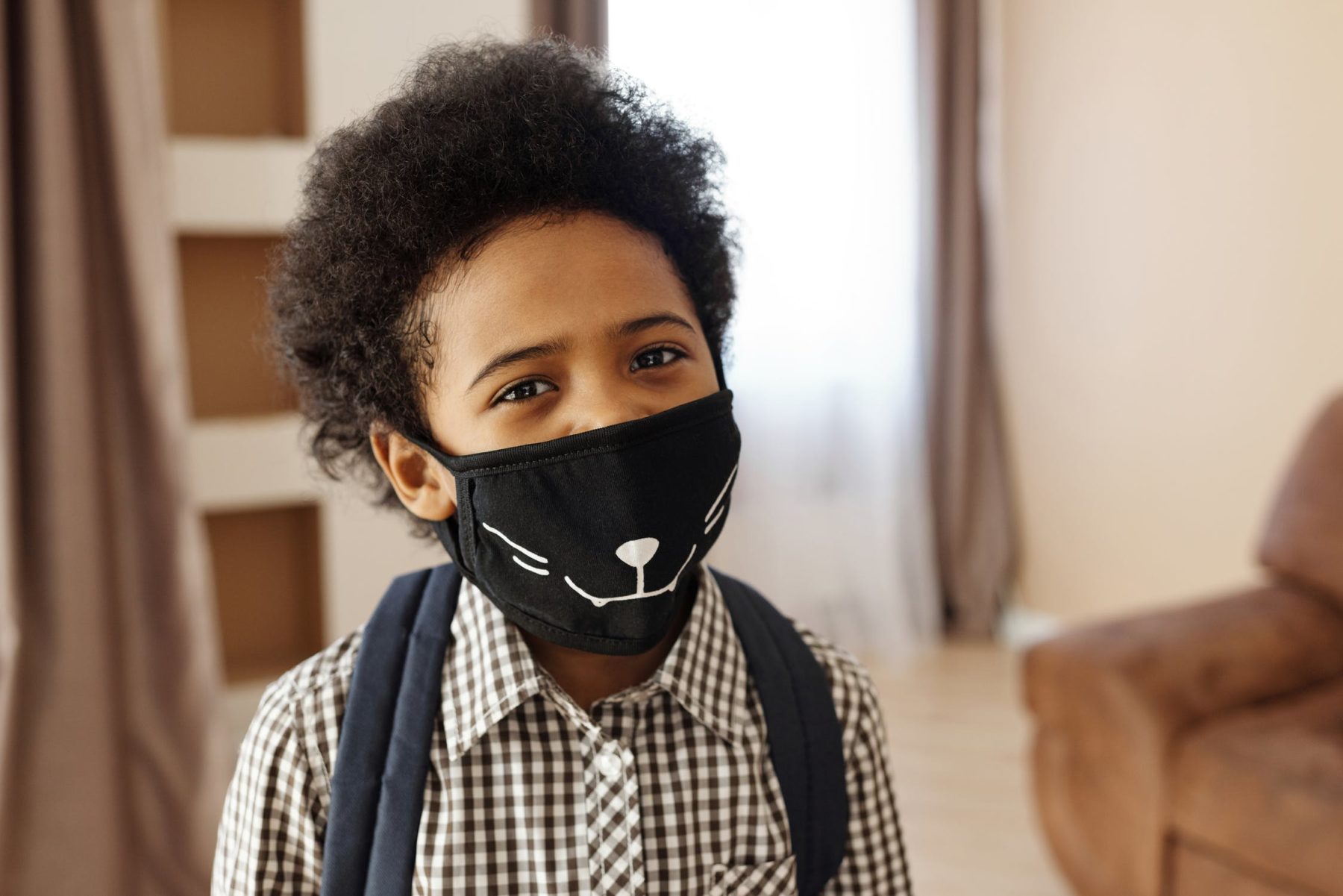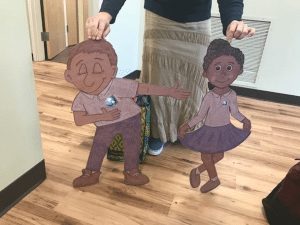Preschoolers and Masks: The Pros and Cons

If your preschooler will need to wear a mask this year, you may wonder whether the benefits outweigh the cost. The truth is, nothing is more important than the safety of children, teachers, and families. But that doesn’t mean there aren’t challenges to address. Here are the pros and cons of preschoolers wearing masks!
The first day of school looks like nothing we have ever seen before. Lunch tables are partitioned and play equipment needs to be sanitized after each use. Most noticeable of all are the covered faces of teachers, custodians, and even children. We all know that masks are required to help reduce the spread of COVID-19, but how will our children cope with not being able to see their caregivers’ mouths moving?
This is an important question because young children have developmental and speech milestones to meet. They also rely on facial cues to help them understand what is expected of them. It is definitely worth considering how masks will hinder our children’s progress and their experience in daycare. At least then we can do our best to meet these needs in alternative ways.
Let’s begin with some basic guidelines.
Why Should We Wear Masks in School?
COVID-19 is spread through droplets that people emit through the mouth and nose while coughing, sneezing, or talking. The number of droplets emitted is greatly reduced when the face is covered by a cloth or disposable mask.
But should children have to wear them? Can we convince them to?
No Masks on Babies
Some schools will require masks all day, while others might only enforce face coverings in specific areas. Regardless, children under age two should not wear a mask under any circumstances. Babies and young children are at risk for suffocation if they wear a face covering.
It is not realistic for an adult caregiver to maintain a distance of six feet from a baby. Making sure that each child is only cared for by one adult, and keeping the child-to-adult ratio as small as possible helps to counter the risk.
Masks and Language Development
Covering the face will certainly impact communication and language development. Even if the child is not masked, the caregiver likely will be, reducing the child’s ability to read facial expressions or observe how sounds are formed by the lips.
This is where parent-teacher collaboration becomes vital. Parents will need to do their best to fill in the gaps by interacting frequently, face-to-face with their children. Having facial expression cards or books on emotions with photographs of people making a variety of angry, surprised, or happy faces will help support this need as well.
Difficulties With Mask-Wearing
Face coverings have their challenges, and little kids may have a hard time coping. They may refuse to wear a mask or continue to remove it.
Let kids pick out their own masks in their preferred colors or designs. Allow them to select the day’s mask each morning. For younger children, it’s best to let them choose between just two options.
Adjustable masks will help with issues of discomfort. If the elastic straps can be tightened, the right fit will make a big difference.
Pack an extra mask or two, because kids are kids, and they might sneeze into their masks or have a habit of licking the inside.
Addressing Bad Habits
Children may be more likely to touch their faces when wearing a mask. Touching the eyes, nose, or mouth with the fingers is a major risk factor in the spread of COVID-19. It is important to work on breaking this habit and little kids will need plenty of reminders.
Reminders won’t guarantee that children stop touching their faces, so keeping their hands clean becomes even more important. Good handwashing means soaping up and washing vigorously for a minimum of twenty seconds before rinsing completely and drying well.
Coming up with a song to sing that lasts for at least twenty seconds is one of the best ways to help kids wash for long enough. Hands should always be washed before and after eating or using the bathroom, and it’s wise to schedule extra handwashing sessions into the daily routine.
Some children will resist face coverings more fervently and take longer than usual to adjust. The truth is, outside of rare exceptions, kids will adapt to our new normal. And this new normal is not forever.


